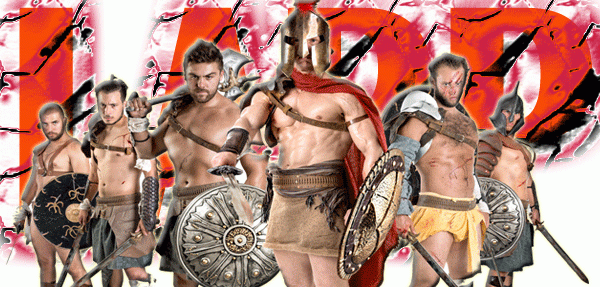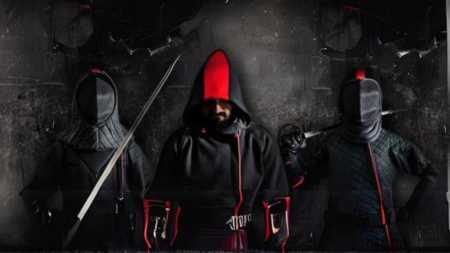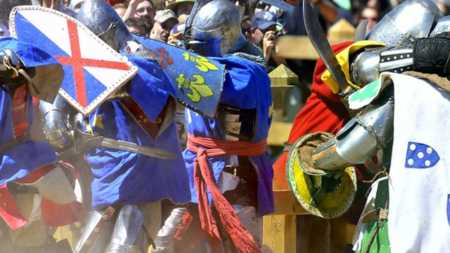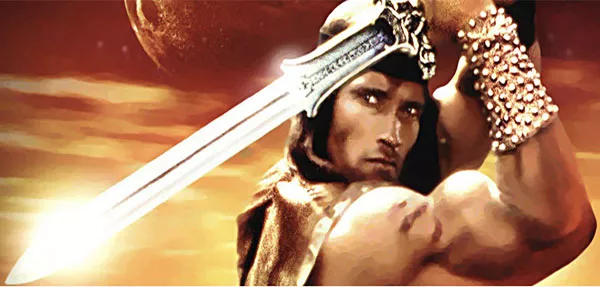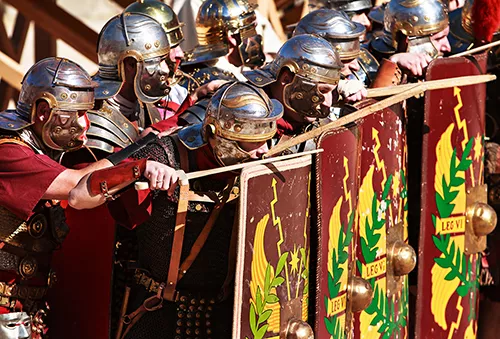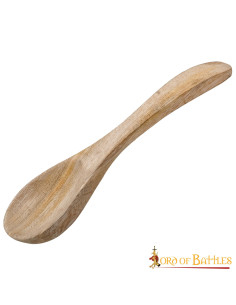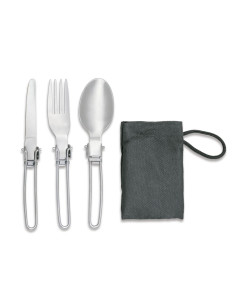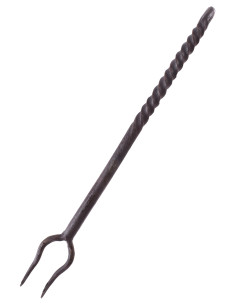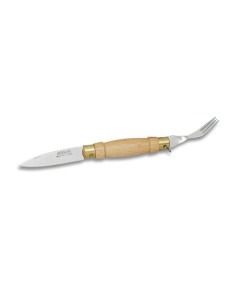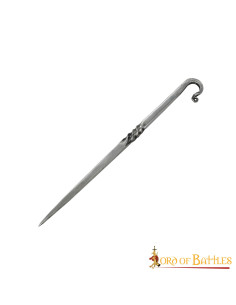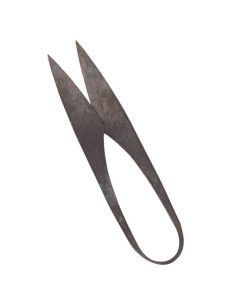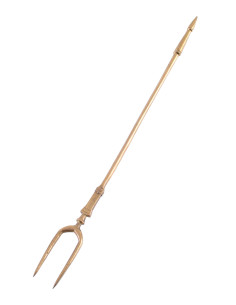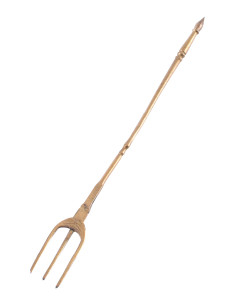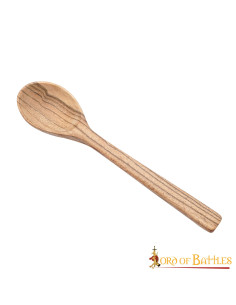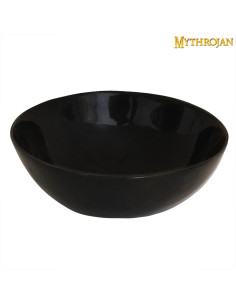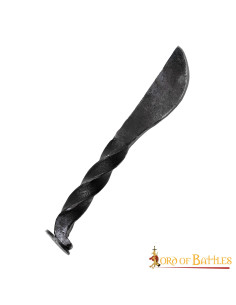Medieval Cutlery
4.12 €
Functional wooden medieval spoon, 19 cm. HANDCRAFTED from ETHICALLY SOURCED HARDWOOD, this 19.1 cm long spoon is FULLY FUNCTIONAL and can also be used for historical re-enactments. It comes with a natural finish that adds to its raw medieval appeal. While eating a brimming bowl of tasty porridge or perhaps some fresh caviar, this medieval wooden spoon...
5.37 €
Get ready for a culinary adventure outdoors with the Stainless Steel Camping Cutlery Set from the Barbaric brand! This set of essential gear is designed for comfort and functionality on your expeditions. It consists of a fork, a spoon and a knife, all foldable for easy transport and storage. Whether you're camping, hiking or enjoying a picnic, these...
5.98 €
Are you a lover of cooking and love to cook in the medieval style? Then this hand-forged iron meat fork is just what you need. This small two-pronged fork is handcrafted from iron, which means it's strong and durable. With a length of approximately 20 cm and a width of approximately 2.5 cm, this fork is easy to handle and can be used to serve roast meats,...
6.12 €
The MAM 3Cr13Mov Steel Knife with Fork is a versatile tool that can be used for a variety of tasks, including cutting meat, vegetables, paper and cardboard. It can also be used to open boxes, peel fruit, and unpack items. The knife features a fork in the handle, making it even more versatile. The knife is made with top quality materials, including a...
6.60 €
If you are looking for a cutlery that never goes out of style, you cannot miss the opportunity to acquire our incredible hand-forged Viking fork-skewer. Are you ready to give your meals an epic touch? Don't think about it anymore and get it right now! Our Viking fork is made of strong steel, which guarantees long durability and impeccable performance....
7.43 €
Take your camping experience a step further with this hand forged Viking Fork. If you are a camping enthusiast and like to eat straight out of the pot, this fork will be perfect for you! Our experienced craftsmen have painstakingly hand-forged this fork from strong iron, giving it an attractive twisted design that is sure to turn heads. At approximately...
7.98 €
Do you need high quality scissors with a historical touch? Look no further because Battle Merchant's Forged Medieval Scissors are just what you're looking for. These scissors have been made of wrought iron, which gives them exceptional resistance and durability. Using an ancient forging technique, each pair of scissors is created with care and precision,...
8.98 €
This reproduction two pronged Roman fork is made of brass and is a great addition to the Roman history reenactors kit. With a straight handle and simple yet elegant details ending in a tapered end, this fork is perfect for those who want to experience daily life in Roman times. The fork is a very interesting piece of flatware and a unique addition to any...
8.98 €
Discover the authenticity and charm of the Roman 3-Prong Brass Fork, a historical piece that will transport you to the time of ancient Rome! Although it is commonly believed that the fork was not invented until the Middle Ages, archaeological finds show that it was already used in Roman times. This three-pronged fork is a true reflection of the...
9.91 €
The Lord of Battles brand medieval wooden spoon is a perfect addition to your historical re-enactments. Handcrafted in meticulous detail, this spoon will transport you back to medieval times with its authenticity and quality. With a length of 24.9 cm, this spoon is the perfect size to use in your daily meals or in your themed events. Its ergonomic design...
10.33 €
Transport your dining table back to medieval times with our Medieval Bowl in Polished Ox Horn! Standing at 1.8" tall and 5" wide, this bowl is the perfect addition to any medieval themed event or dinner party at home. Each bowl is handcrafted from high-quality polished ox horn, which means they are not only beautiful, but durable and hard-wearing as well....
10.74 €
A rustic knife is all you need to make an awesome camping experience or even as a gift for a vintage enthusiast! This railroad spike knife is sure to be a perfect choice. Taking its name from the intriguing railroad spike used to tighten the rails of a train track, our railroad spike knife is a functional forged piece of equipment that lasts for years,...

